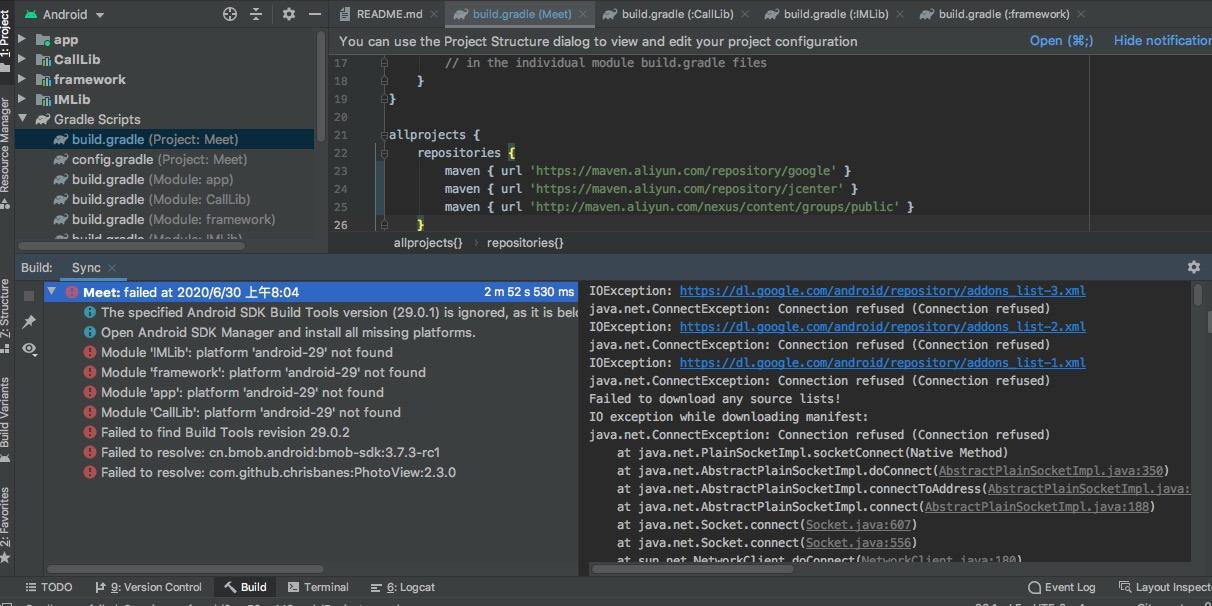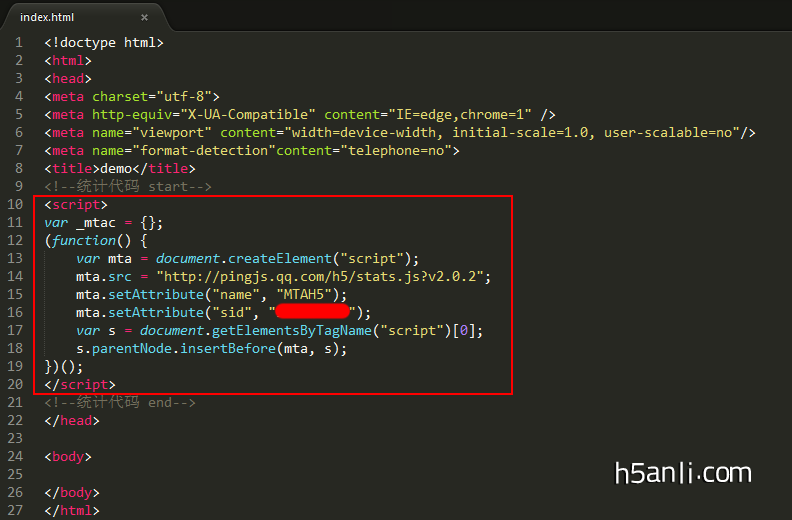原文:
作者:
翻译:
校对:、、
静态文件(static files),诸如 HTML、CSS、图片和 Java 之类的资源会被 ASP.NET Core 应用直接提供给客户端。
章节:
静态文件通常位于 web root(<content-root>/wwwroot)文件夹下。更多有关 Content root 或 Web root 的信息请访问 。你通常会把项目的当前目录设置为 Content root,这样项目的 web root 就可以在开发阶段被明确。
publicstaticvoidMain(string[] args){ var host = newWebHostBuilder() .UseKestrel() .UseContentRoot(Directory.GetCurrentDirectory()) .UseIISIntegration() .UseStartup<Startup>() .Build(); host.Run(); }
展开全文
静态文件能够被保存在网站根目录下的任意文件夹内,并通过相对根的路径来访问。比方说,当你通过 Visual Studio 创建一个默认的 Web 应用程序项目,在 wwwroot目录下会多出几个文件夹:css、images以及 js文件夹。形如下例的 URL 能够直接访问 images 目录下的图片:
http://<app>/images/<imageFileName>
http://localhost:9189/images/banner3.svg
http://<app>/images/<imageFileName>
http://localhost:9189/images/banner3.svg
为了能够启用静态文件服务,你必须配置中间件(),把静态文件中间件加入到管道内。静态文件中间件能够通过下述方法来配置:在你的项目中增加 Microsoft.AspNetCore.StaticFiles包依赖,然后从 Startup.Configure 调用 扩展方法:
publicvoidConfigure(IApplicationBuilder app, IHostingEnvironment env, ILoggerFactory loggerFactory){ app.UseStaticFiles(); }
app.UseStaticFiles(); 使得 web root(默认为 wwwroot)下的文件可以被访问。随后我将展示如何通过使用 UseStaticFiles 将其他目录下的内容也向外提供服务。
你必须在 project.json文件中包含 “Microsoft.AspNetCore.StaticFiles”。
注意
web root 的默认目录是 wwwroot,但你可以通过 来设置 web root 。具体可参考 。
注意
web root 的默认目录是 wwwroot,但你可以通过 来设置 web root 。具体可参考 。
假设你有一个有层次结构的项目,你希望其中静态文件的位于 web root 的外部,比如:
wwwroot
css
images
...
MyStaticFiles
test.png
wwwroot
css
images
...
css
images
...
MyStaticFiles
test.png
test.png
对于访问 test.png的请求,可以如此配置静态文件中间件:
复制代码
publicvoidConfigure(IApplicationBuilder app, IHostingEnvironment env, ILoggerFactory loggerFactory){ app.UseStaticFiles(); app.UseStaticFiles( newStaticFileOptions() { FileProvider = newPhysicalFileProvider( Path.Combine(Directory.GetCurrentDirectory(), @ "MyStaticFiles")), RequestPath = newPathString( "/StaticFiles") });
}
在请求 时,就能访问到 test.png文件。
静态文件授权
静态文件模块并 不提供授权检查。任何通过该模块提供访问的文件,包括位于 wwwroot下的文件都是公开的。为了给文件提供授权:
将文件保存在 wwwroot之外并将目录设置为可被静态文件中间件访问到,同时——
通过一个控制器的 Action 来访问它们,通过授权后返回
将文件保存在 wwwroot之外并将目录设置为可被静态文件中间件访问到,同时——
通过一个控制器的 Action 来访问它们,通过授权后返回
目录浏览允许网站用户看到指定目录下的目录和文件列表。基于安全考虑,默认情况下是禁用目录访问功能的(参考 )。在 Startup.Configure 中调用 扩展方法可以开启网络应用目录浏览:
publicvoidConfigure(IApplicationBuilder app, IHostingEnvironment env, ILoggerFactory loggerFactory){ app.UseStaticFiles(); // For the wwwroot folderapp.UseStaticFiles( newStaticFileOptions() { FileProvider = newPhysicalFileProvider( Path.Combine(Directory.GetCurrentDirectory(), @ "wwwroot\images")), RequestPath = newPathString( "/MyImages") }); app.UseDirectoryBrowser( newDirectoryBrowserOptions() { FileProvider = newPhysicalFileProvider( Path.Combine(Directory.GetCurrentDirectory(), @ "wwwroot\images")), RequestPath = newPathString( "/MyImages") }); }
并且通过从 Startup.ConfigureServices 调用 扩展方法来增加所需服务。
publicvoidConfigureServices(IServiceCollection services){ services.AddDirectoryBrowser(); }
这段代码允许在访问 http://<app>/MyImages 时可浏览 wwwroot/images文件夹的目录,其中包括该文件夹下的每一个文件与文件夹:
查看关于开放访问目录时的安全隐患 一节。
注意两个 app.UseStaticFiles 调用。第一个调用请求 wwwroot文件夹下的 CSS、图片和 Java,第二个调用通过 http://<app>/MyImages 请求浏览 wwwroot/images文件夹的目录
复制代码
publicvoidConfigure(IApplicationBuilder app, IHostingEnvironment env, ILoggerFactory loggerFactory){ app.UseStaticFiles(); // For the wwwroot folder app.UseStaticFiles( newStaticFileOptions() { FileProvider = newPhysicalFileProvider( Path.Combine(Directory.GetCurrentDirectory(), @ "wwwroot\images")), RequestPath = newPathString( "/MyImages") }); app.UseDirectoryBrowser( newDirectoryBrowserOptions() { FileProvider = newPhysicalFileProvider( Path.Combine(Directory.GetCurrentDirectory(), @ "wwwroot\images")), RequestPath = newPathString( "/MyImages") }); } 默认文档服务
设置默认首页能给你的站点的每个访问者提供一个起始页。为使站点能提供默认页,避免用户输入完整 URI,须在 Startup.Configure 中调用 UseDefaultFiles 扩展方法:

publicvoidConfigure(IApplicationBuilder app){ app.UseDefaultFiles(); app.UseStaticFiles(); }
注意
必须在 UseStaticFiles 之前调用。UseDefaultFiles 只是重写了 URL,而不是真的提供了这样一个文件。你必须开启静态文件中间件(UseStaticFiles)来提供这个文件。
注意
必须在 UseStaticFiles 之前调用。UseDefaultFiles 只是重写了 URL,而不是真的提供了这样一个文件。你必须开启静态文件中间件(UseStaticFiles)来提供这个文件。
通过 ,请求文件夹的时候将检索以下文件:
default.htm
default.html
index.htm
index.html
default.htm
default.html
index.htm
index.html
上述列表中第一个被找到的文件将返回给用户(作为该完整 URI 的请求的应答,而此时浏览器 URL 将继续显示用户输入的 URI)。
下述代码展示如何将默认文件名改为 mydefault.html。
复制代码
publicvoidConfigure(IApplicationBuilder app){ // Serve my app-specific default file, if present. DefaultFilesOptions options = newDefaultFilesOptions(); options.DefaultFileNames.Clear(); options.DefaultFileNames.Add( "mydefault.html"); app.UseDefaultFiles(options); app.UseStaticFiles(); } UseFileServer
包含了 、和 的功能。
下面的代码启用了静态文件和默认文件,但不允许直接访问目录:
app.UseFileServer();
下面的代码启用了静态文件、默认文件和目录浏览功能:
app.UseFileServer( enableDirectoryBrowsing: true);
查看直接提供目录访问时的安全风险。作为一个集合了 UseStaticFiles、UseDefaultFiles 和 UseDirectoryBrowser 方法于一体的方法,如果你希望提供 web root 之外存在的文件,你要实例化并配置一个 对象传递给 UseFileServer 的参数。比方说在你的应用中有如下层次的目录:
wwwroot
css
images
...
MyStaticFiles
test.png
default.html
wwwroot
css
images
...
css
images
...
MyStaticFiles
test.png
default.html
test.png
default.html
使用上面这个层次结构的示例,你可能希望启用静态文件、默认文件以及浏览 MyStaticFiles 目录。下面的代码片段演示了调用一次 来完整实现这些功能:
publicvoidConfigure(IApplicationBuilder app, IHostingEnvironment env, ILoggerFactory loggerFactory){ app.UseStaticFiles(); app.UseFileServer( newFileServerOptions() { FileProvider = newPhysicalFileProvider( Path.Combine(Directory.GetCurrentDirectory(), @ "MyStaticFiles")), RequestPath = newPathString( "/StaticFiles"), EnableDirectoryBrowsing = true});
}
如果在你从 Startup.ConfigureServices 请求调用 扩展方法时将 enableDirectoryBrowsing 置为 true,那么:
publicvoidConfigureServices(IServiceCollection services){ services.AddDirectoryBrowser(); }
使用的文件层次结构:
URI
Response
StaticFiles/test.png
http://<app>/StaticFiles
MyStaticFiles/default.html
如果在 MyStaticFiles目录下没有默认命名的文件,则 http://<app>/StaticFiles 将返回目录列表,其中包含可供点击的链接:
注意
UseDefaultFiles 和 UseDirectoryBrowser 将会把末尾不带斜杠的 URL http://<app>/StaticFiles 重新定向到 http://<app>/StaticFiles/ (末尾增加了一个斜杠)。如果末尾不带斜杠,文档内相对 URL 会出错。
注意
UseDefaultFiles 和 UseDirectoryBrowser 将会把末尾不带斜杠的 URL http://<app>/StaticFiles 重新定向到 http://<app>/StaticFiles/ (末尾增加了一个斜杠)。如果末尾不带斜杠,文档内相对 URL 会出错。
类内包含一个将文件扩展名映射到 MIME 内容类型的集合。在下面的例子中,多个文件扩展名注册为已知的 MIME 类型,“.rtf”被替换,“.mp4”被移除。
复制代码
publicvoidConfigure(IApplicationBuilder app){ // Set up custom content types -associating file extension to MIME type var provider = newFileExtensionContentTypeProvider(); // Add new mappings provider.Mappings[ ".myapp"] = "application/x-msdownload"; provider.Mappings[ ".htm3"] = "text/html"; provider.Mappings[ ".image"] = "image/png"; // Replace an existing mapping provider.Mappings[ ".rtf"] = "application/x-msdownload"; // Remove MP4 videos. provider.Mappings.Remove( ".mp4"); app.UseStaticFiles( newStaticFileOptions() { FileProvider = newPhysicalFileProvider( Path.Combine(Directory.GetCurrentDirectory(), @ "wwwroot\images")), RequestPath = newPathString( "/MyImages"), ContentTypeProvider = provider }); app.UseDirectoryBrowser( newDirectoryBrowserOptions() { FileProvider = newPhysicalFileProvider( Path.Combine(Directory.GetCurrentDirectory(), @ "wwwroot\images")), RequestPath = newPathString( "/MyImages") }); }
查看 。
非标准的内容类型
ASP.NET 静态文件中间件能够支持超过 400 种已知文件内容类型。如果用户请求一个未知的文件类型,静态文件中间件将返回 HTTP 404(未找到)响应。如果启用目录浏览,该文件的链接将会被显示,但 URI 会返回一个 HTTP 404 错误。
下方代码把不能识别的类型和文件作为图片处理。
publicvoidConfigure(IApplicationBuilder app, IHostingEnvironment env, ILoggerFactory loggerFactory){ app.UseStaticFiles( newStaticFileOptions { ServeUnknownFileTypes = true, DefaultContentType = "image/png"}); }
根据上面的代码,未知内容类型的文件请求将返回一张图片。

警告
开启 存在安全风险,请打消这个念头。(下文将解释)提供了更安全的非标准扩展替代。
警告
开启 存在安全风险,请打消这个念头。(下文将解释)提供了更安全的非标准扩展替代。
警告
UseDirectoryBrowser 和 UseStaticFiles 可能会泄密。我们推荐你 不要在生产环境开启目录浏览。要小心哪些被你开启了 UseStaticFiles或 UseDirectoryBrowser 的目录(使得其子目录都可被访问)。我们建议将公开内容放在诸如 <content root>/wwwroot这样的目录中,远离应用程序视图、配置文件等。
警告
UseDirectoryBrowser 和 UseStaticFiles 可能会泄密。我们推荐你 不要在生产环境开启目录浏览。要小心哪些被你开启了 UseStaticFiles或 UseDirectoryBrowser 的目录(使得其子目录都可被访问)。我们建议将公开内容放在诸如 <content root>/wwwroot这样的目录中,远离应用程序视图、配置文件等。
使用 UseDirectoryBrowser 和 UseStaticFiles 暴露的文件的 URL 是否区分大小写以及字符限制受制于底层文件系统。比方说 Windows 是不区分大小写的,但 macOS 和 Linux 则区分大小写。
托管于 IIS 的 ASP.NET Core 应用程序使用 ASP.NET Core 模块向应用程序转发所有请求,包括静态文件。IIS 静态文件处理程序(IIS Static File Handler)不会被使用,因为在 ASP.NET Core 模块处理之前它没有任何机会来处理请求。
以下步骤可移除 IIS 静态文件处理程序(在服务器层级或网站层级上):
导航到 模块功能
从列表中选中 StaticFileModule
在 操作侧边栏中点击 删除
使用 UseDirectoryBrowser 和 UseStaticFiles 暴露的文件的 URL 是否区分大小写以及字符限制受制于底层文件系统。比方说 Windows 是不区分大小写的,但 macOS 和 Linux 则区分大小写。
托管于 IIS 的 ASP.NET Core 应用程序使用 ASP.NET Core 模块向应用程序转发所有请求,包括静态文件。IIS 静态文件处理程序(IIS Static File Handler)不会被使用,因为在 ASP.NET Core 模块处理之前它没有任何机会来处理请求。
以下步骤可移除 IIS 静态文件处理程序(在服务器层级或网站层级上):
导航到 模块功能
从列表中选中 StaticFileModule
在 操作侧边栏中点击 删除
导航到 模块功能
从列表中选中 StaticFileModule
在 操作侧边栏中点击 删除
警告
如果 IIS 静态文件处理程序开启 并且ASP.NET Core 模块(ANCM)没有被正确配置(比方说web.config没有部署),(也能)将会提供静态文件。
警告
如果 IIS 静态文件处理程序开启 并且ASP.NET Core 模块(ANCM)没有被正确配置(比方说web.config没有部署),(也能)将会提供静态文件。
代码文件(包括 C# 和 Razor)应该放在应用程序项目的 web root (默认为 wwwroot)之外的地方。这将确保您创建的应用程序能明确隔离客户端侧和服务器侧源代码,此举能防止服务器侧的代码被泄露。
代码文件(包括 C# 和 Razor)应该放在应用程序项目的 web root (默认为 wwwroot)之外的地方。这将确保您创建的应用程序能明确隔离客户端侧和服务器侧源代码,此举能防止服务器侧的代码被泄露。
相关文章:
原文地址:http://www.cnblogs.com/dotNETCoreSG/p/aspnetcore-3_3-static-files.html
.NET社区新闻,深度好文,微信中搜索dotNET跨平台或扫描二维码关注
人赞赏